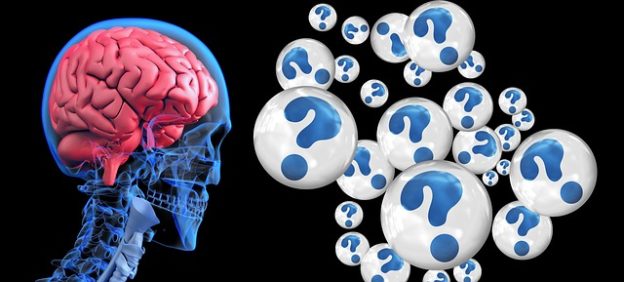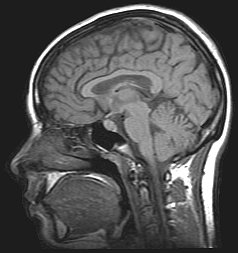Developmental Cognition and Biological Bases of Cognition
Table of Contents
What is Cognition?
When one is attentive to his or her environment, they can perceive information and analyze it, store this information and remember it, and finally can form decisions or generate ideas. That person becomes aware of his or her situation, needs and goals.
Therefore, patients with impaired cognition due to aging or because of certain neurodegenerative disorders such as Alzheimer’s disease are expected to have an impairment in one or any of these cognitive domains.
Piaget’s Stages of Cognitive Development
Piaget hypothesized that cognition goes through four main developmental stages during his observational studies on children. The first stage is called the sensory motor stage. Infants from the time of birth until 2 years of age depend largely on touching, hearing and observing different stimuli to learn about their environment. Their main goal is to achieve their own needs and goals and are therefore considered as egocentric.

“Jean Piaget´s model included four develpment stages” Images created by Lecturio
The pre-operational stage begins at the age of 2 years and usually ends by 7 years of age. During this period, thought processes are believed to start to develop. During this stage, the children start building their vocabulary but their thoughts are still immature and perhaps illogical to an adult.
During this stage, children can understand symbolism and can start differentiating between right and wrong. Children at this stage start to understand that they are not the center of the world and they start to accept that other younger siblings need more parenteral attention than them.
From 7 to 11 years, the child enters the concrete operational stage. During this period the child’s thoughts become logical and rational. They can develop rational thoughts about an object, say a toy, only if they can see it and manipulate it.
At the end of this stage, children enter the formal operational stage in which they are able to form logical thoughts about objects even when they are not present in front of them. It is thought that children at this stage, 11 to 16 years of age, have reached the maturity of adult thoughts, reasoning and abstract thinking.
Developmental Cognitive Neuroscience
The previously described model has limitations in terms of identifying which factors might affect each stage of cognitive development. Developmental cognitive neuroscience is a recent study field that focuses on understanding how genetics, certain disease processes, epigenetics, and the environment can affect cognition development.
Several neurodevelopmental disorders have been identified such as autism, and autism spectrum disorders that have both environmental and biologic bases. Currently, it is believed that genetic predisposition put the patient at an increased risk of developing a certain condition but in many cases would not lead to the development of that disease unless certain external inputs, i.e. environmental factors, are also present.
For instance, many genes have been linked to an increased incidence of depression, schizophrenia and other mental disorders. However, not all people carrying these polymorphisms actually develop the disease and we currently believe that the environment even during infancy plays a critical role in the emergence of these diseases in a susceptible individual.
The genetic–environmental interplay in neurodevelopment is believed to affect neuronal axonal plasticity and neuronal circuits, cell loss and regeneration, and different brain neurotransmitters in different brain regions. These changes are thought to be responsible for the abnormal phenotype in several neurodevelopmental disorders.
Assessment of Cognition
In a clinical setting, it is important to assess cognition objectively to classify patients and guide their treatment plans. The easiest tool to assess cognition is through a formal mental state examination or a mini-mental state examination, that is used in facilities for the elderly for repeated assessment of dementias over time. (See Mini Mental State Exam_tcm18-169319).
These examinations depend on the clinical assessment of different cognitive domains such as working memory, short-term visual and verbal memory, executive functioning, inhibition/disinhibition, abstract thinking, attention, and language tasks.
Image: “Magnetic resonance image of a human brain.” by Fastfission~commonswiki. License: Public Domain
Functional Magnetic Resonance Imaging (fMRI) is being used nowadays to assess different cognitive functions such as short-term memory, visual perception, visual attention, selective attention and language just to name a few. This method is considered as more objective but in many cases can only provide information learned by testing groups of individuals with the same condition but is not specific enough to attribute the specific location of a disease to an individual patient, hence might be of limited clinical value.
In spite of this, fMRI assessment of areas of language, motor, and short-term memory has been well studied and is currently of tremendous importance for the presurgical evaluation of epilepsy in patients who have pharmacoresistant epilepsy.
Psychophysical testing provides objective assessment of different complex cognitive processes such as perceptual learning, visual-attention problems and visual perception in certain conditions such as diabetes.
Assessment of Biological Determinants of Cognition
Certain conditions such as depression, schizophrenia, obsessive compulsive disorder and autism have been extensively studied at the cellular level as well as in living subjects and animal models to determine the biological pathways and bases of development of cognition. This work not only provides new insights into the pathogenesis of these conditions but also provides more information about cognitive development in general in healthy people.
Certain neurotransmitters such as GABA, glutamate, acetylcholine, dopamine and serotoninhave all been shown to be altered in concentration in several neurodevelopmental disorders. Once a high-susceptibility gene has been identified for a given condition, a cellular or animal model of that disease can be reproduced by inducing the same mutation.
At the cellular level, it is easy to identify the concentrations of the different neurotransmitters biochemically, and to compare with a control to see how changes in these metabolites happen in a given condition. In living animals and in humans, magnetic resonance spectroscopy and positron emission tomography can be used to evaluate the concentrations of these neurotransmitters in the brain or their receptors respectively.
The in-vivo assessment of these neurotransmitters allows the investigator to correlate their changes with possible behavioral or cognitive impairment and changes in the subject. This work allows the collaboration between multiple health personnel, including psychologists, psychiatrists, neurologists, radiologists, and neuroscientists.


Comentários
Enviar um comentário